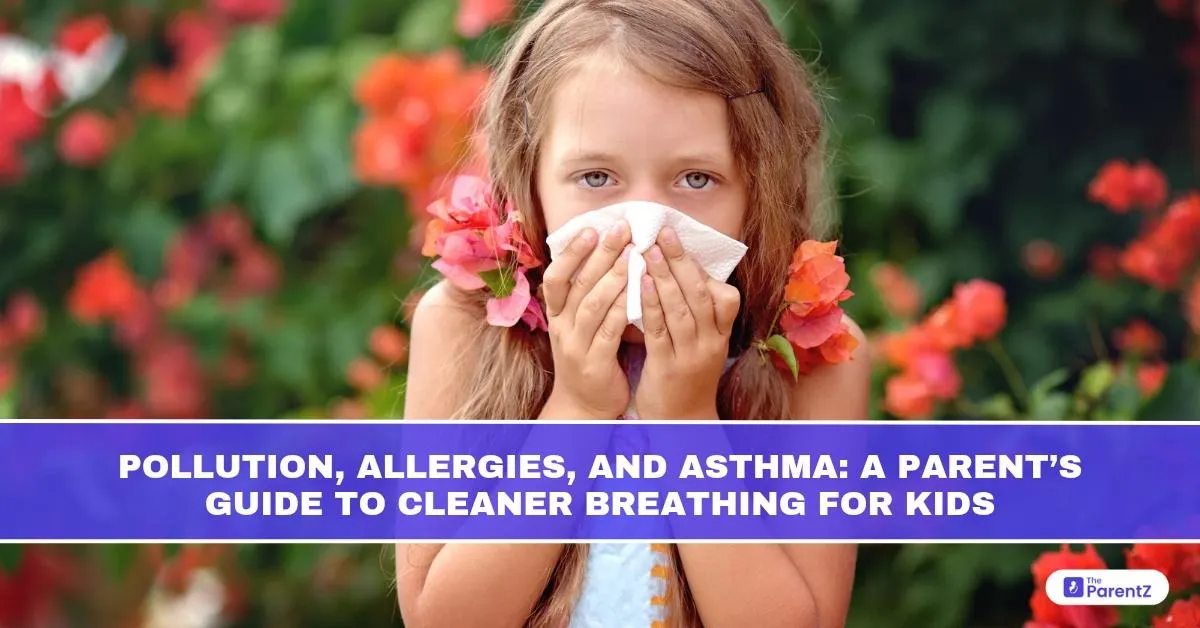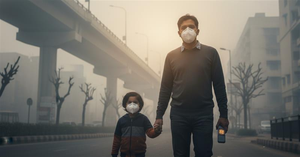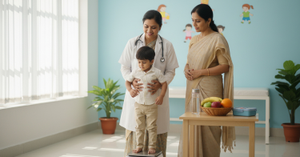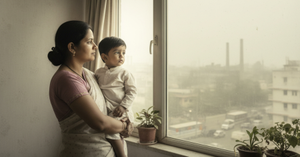In cities across India and around the world, air pollution is no longer just an environmental issue; it’s a pediatric health crisis. Children’s lungs are still developing, and constant exposure to polluted air, allergens, and irritants can have long-lasting consequences. From allergic rhinitis to asthma, poor air quality is often the invisible trigger behind chronic respiratory symptoms in children.
Why Are Children More Vulnerable?
Children breathe faster than adults and spend more time outdoors, making them more exposed to environmental triggers. Their smaller airways are easily inflamed, and their immune systems are still maturing. According to the Indian Academy of Pediatrics and WHO, early exposure to pollutants like PM2.5, nitrogen dioxide, sulfur dioxide, and ozone can impair lung growth, increase allergy risk, and worsen asthma symptoms.
Pollution and Pediatric Airways: What the Research Says
Studies published in journals like The Lancet and Pediatric Pulmonology show:
- Long-term exposure to air pollution leads to reduced lung function in children.
- Children living near high-traffic areas have a higher prevalence of bronchitis-like symptoms and asthma.
- Fine particulate matter (PM2.5) is strongly linked to wheezing and allergic sensitization.
How Pollution Triggers Allergies and Asthma
1. Inflammation of Airways
Pollutants damage the respiratory lining, triggering an inflammatory cascade that mimics or worsens allergy and asthma symptoms.
2. Increased Sensitivity to Allergens
Polluted air can amplify the immune system’s reaction to allergens like dust mites, pollen, and mold spores.
3. Oxidative Stress
Toxic particles in the air induce oxidative stress, reducing lung resilience and increasing susceptibility to infections and chronic conditions.
Spotting the Signs: When Air Quality Is Affecting Your Child
If your child often shows the following symptoms, poor air quality could be contributing:
- Frequent sneezing, coughing, or throat clearing
- Chest tightness, especially in the early morning or night
- Persistent runny nose or nasal congestion
- Shortness of breath or fatigue with exercise
- Increased use of rescue inhalers
Children with pre-existing asthma or allergic rhinitis are particularly at risk of flare-ups during pollution spikes.
Allergy vs. Asthma: What’s the Difference?
- Allergic Rhinitis: Triggered by allergens like pollen, dust, and mold. Presents with sneezing, nasal itching, and watery eyes.
- Asthma: A chronic lung condition characterized by wheezing, cough, and shortness of breath due to airway inflammation and narrowing.
- Often, children have both, a condition known as allergic asthma.
Diagnosing Pollution-Linked Breathing Issues
Consult a pediatrician or pediatric pulmonologist if your child has recurring symptoms. The workup may include:
- Lung function tests (for kids above age 5)
- Allergy testing to identify environmental triggers
- Chest X-ray or spirometry
- Symptom diaries correlating episodes with AQI levels
Managing Symptoms and Preventing Exposure
1. Monitor the Air Quality Index (AQI)
Install a reliable air quality app or check local sources daily. An AQI above 100 can worsen symptoms in sensitive children. Above 200, outdoor activity should be minimized.
2. Optimize Indoor Air
- Use HEPA-filter air purifiers in bedrooms and living rooms.
- Keep windows closed during high pollution days.
- Avoid indoor smoking or incense.
- Regularly vacuum with filters and mop to reduce indoor dust.
3. Time Outdoor Play Smartly
- Let your child play outdoors when AQI is lowest, typically early mornings after rain.
- Avoid heavy traffic areas, construction zones, and burning garbage spots.
4. Use Protective Face Masks (N95/FFP2)
Children aged 7 and above can safely use well-fitted masks during pollution surges. While masks don’t prevent all exposure, they reduce particulate inhalation significantly.
5. Supportive Medical Care
- Ensure asthma action plans are updated and inhalers are used correctly.
- Prescribe controller medications (like inhaled corticosteroids) for moderate to severe asthma.
- For allergies, use non-sedating antihistamines and nasal sprays regularly.
- Nasal saline irrigation can help wash out pollutants and allergens.
Long-Term Strategies for Parents
- Immunotherapy: In children with persistent allergic triggers, allergen immunotherapy may reduce symptoms and medication dependence.
- Flu and Pneumococcal Vaccination: Essential for kids with respiratory vulnerabilities.
- Nutritional Support: Diets rich in antioxidants (vitamins C, E, zinc) help reduce oxidative stress from pollutants.
Advocacy Starts at Home
Teaching children about pollution and how to protect themselves is empowering. But beyond the home, parents can:
- Support clean energy and anti-pollution measures in schools.
- Advocate for green spaces and fewer diesel-run vehicles in your locality.
- Join community efforts for awareness and tree plantation.
Conclusion
Pollution is more than a climate issue; it’s a daily respiratory challenge for children with allergies or asthma. But with vigilant monitoring, home modifications, and proactive care, parents can dramatically improve their child’s breathing health, even in high-AQI environments. Cleaner air may not be in our immediate control, but healthier breathing habits certainly are.








Be the first one to comment on this story.